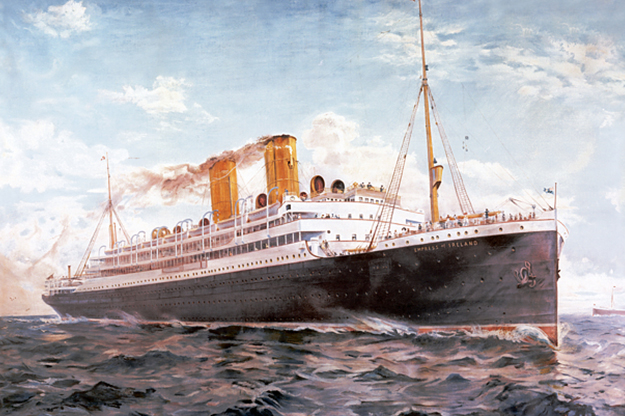Death of an Empress

Death of an Empress
by Major Paul Murray
It is ninety-seven years since the Canadian Pacific liner Empress of Ireland sank in the St. Lawrence River. The ship sank on May 29, 1914 with a lost of 1,012 lives out of 1,477 on board. By comparison the Titanic, in 1912, lost more people than the Empress but less passengers. The Empress lost 840 passengers compared to 807 from the Titanic. The remainder of the dead were crew members – 172 from the Empress and 698 from the Titanic.
Among the dead on the Empress of Ireland were approximately 150-plus members of The Salvation Army in Canada, including the entire leadership contingent and all but twelve of the Canadian Staff Band.
The Empress was an imposing sight. As high above the water line as a two-story building (36 feet), as long as two football fields (550 feet) and as wide as a four-lane highway (65 feet), this sedate alcazar of white and grey with its magnificent ballrooms, dining lounges and cabins had been completed for the Canadian Pacific Company in 1906 as a sister ship to the Empress of Britain by the Fairfield Shipbuilding Company of Glasgow, Scotland. It was equipped with powerful quadruple expansion engines capable of doing a steady 20 knots at sea. The ship had about it an aura of impregnable, imperial splendour.
As the Empress of Ireland pulled away from the dock at Quebec a small group of Salvation Army people on shore sang for their departing comrades, “God be with you will we meet again.” They were accompanied by the Canadian Staff Band. The singing became fainter as the liner gained speed and steamed majestically down river toward Rimouski, 200 miles away. As the village of Father Point, four miles east of Rimouski, the pilot disembarked and the final bags of foreign mail were received. The ocean voyage was then considered to have begun and the ship was in the hands of Captain Henry Kendall and his officers.
The St. Lawrence at Rimouski is twenty-five miles from shore to shore and resembles more an inland sea than a river. At 1:35 a.m., shortly after leaving Father Point, the Empress lookout reported a ship’s masthead ahead on the right hand side of the linter. It was a Norwegian collier, Storstad, a 6,000 ton vessel hauling 10,000 tons of coal from Sydney, Nova Scotia to Montreal. Shortly after the sighting a fog bank rolled out from the Quebec shore and enveloped both ships in an eerie dark embrace.
One of the terrors of shipping in those pre-radar days was fog and the “rule of the road” for ships at sea was that vessels approaching each other, especially in fog banks, keep parallel courses. Both the Empress and the Storstad proceeded through the darkness giving signals that no change in course had been made. But at 1:55 a.m. on May 29, 1914 the Storstad appeared out of the fog and sliced 20 feet deep into the starboard side of the Empress. Within 14 minutes in the impact, the Empress of Ireland, pride of the Canadian Pacific fleet, had sunk and with it 1,012 souls perished.
So swift was the demise of the liner that only four of forty lifeboats got away. Scores were killed on impact, hundreds were trapped inside the ship and many perished in the ice waters of the St. Lawrence. The Storstad backed away from the Empress and lowered lifeboats to pick up survivors who were taken to Rimouski.
In June 1914 an inquiry headed by Lord Mersey placed the blame on the Storstad for the sinking of the Empress of Ireland. Conversely, a probe at the Norwegian Consulate in Montreal laid the blame on the Empress. Both Captains had insisted that the other had changed course in the fog.
Every year, on the Sunday closest to May 29, The Salvation Army pays tribute to theirs leaders, bandsmen and soldiers who perished so swiftly in the sinking of the Empress of Ireland. At the south-west corner of Toronto’s Mount Pleasant Cemetery they gather around a ten-foot sandstone memorial plinth to commemorate on this quiet site the sinking of the Canadian Pacific liner and the loss of over 150 comrades so many years ago. May we never forget this important part of Canadian and Salvation Army history.
See photos from the event on Facebook: https://www.facebook.com/media/set/?set=a.366807510049499.88131.227967887266796&type=1



